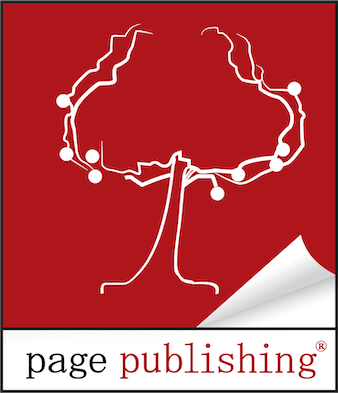
Plot Development Series – Nonlinear Narratives Across Series

In the realm of storytelling, linear narratives—those that follow a straightforward, chronological order—are the norm. However, nonlinear narratives, which break away from chronological storytelling, can offer a unique and dynamic way to engage readers. When extended across a series, nonlinear narratives challenge both the author and the reader, but they can lead to richly layered, intricate tales that resonate on multiple levels. In this installment of the Plot Development Series, we’ll explore how to craft nonlinear narratives across a series and why they can be a powerful tool in your storytelling arsenal.
Understanding Nonlinear Narratives
Nonlinear Narrative: A nonlinear narrative is one in which events are presented out of chronological order. This can include flashbacks, flash-forwards, parallel timelines, or fragmented storytelling. These techniques can be used to reveal information gradually, build suspense, or explore characters and themes in a more complex manner.
Why Choose a Nonlinear Narrative for a Series?
Complexity and Depth
Nonlinear narratives allow you to build complexity into your story by weaving together different timelines, perspectives, or plot threads. This can add depth to your characters and themes, making your series more engaging and thought-provoking.
Suspense and Intrigue
By withholding key information or presenting events out of order, you can create suspense and intrigue. Readers are often drawn to unraveling the mystery of how different events and timelines connect, keeping them invested in the story.
Exploring Character and Theme
Nonlinear storytelling lets you delve deeper into character development and thematic exploration. By showing how past, present, and future events intersect, you can provide a more nuanced understanding of your characters and the themes of your series.
Narrative Flexibility
A nonlinear approach gives you the flexibility to explore different parts of your story in any order, allowing you to reveal or withhold information strategically. This can be particularly useful in a series, where you may want to explore different aspects of the story in each installment.
Strategies for Crafting Nonlinear Narratives Across a Series
Plan Your Timeline Carefully
Nonlinear narratives require careful planning to ensure that the story remains coherent and engaging. Create a detailed timeline of events that includes all the key moments in your series, then decide how and when to reveal each piece of information. This planning will help you maintain consistency and avoid confusion.
Use Flashbacks and Flash-forwards
Flashbacks and flash-forwards are powerful tools for nonlinear storytelling. They allow you to provide context, reveal character backstory, or foreshadow future events. Use these techniques to gradually build the narrative, ensuring each shift in time adds to the overall story.
Weave Parallel Timelines
Parallel timelines can be used to tell multiple stories simultaneously, with events in one timeline influencing or reflecting events in another. This approach can add complexity and depth to your series, as readers piece together how the timelines intersect and impact each other.
Fragmented Storytelling
Fragmented storytelling involves presenting pieces of the narrative in a disjointed or non-sequential order. This can create a puzzle-like experience for readers, as they must put the pieces together to understand the full story. Be sure to provide enough clues and connections to guide readers through the narrative.
Thematic Resonance
Ensure that your nonlinear structure enhances the themes of your series. For example, if your series explores memory, identity, or the passage of time, a nonlinear narrative can reflect and reinforce these themes, making the storytelling method an integral part of the message.
Character-Driven Nonlinearity
Use nonlinear elements to delve into character psychology. Shifts in time can reflect a character’s inner turmoil, memories, or growth. For example, a character might revisit key moments from their past that shaped their current actions, allowing readers to gain a deeper understanding of their motivations.
Pacing and Structure
Pay careful attention to pacing when crafting a nonlinear series. Ensure that each installment provides enough resolution to satisfy readers while leaving room for further exploration. Balance moments of revelation with periods of suspense to keep readers engaged across the series.
Consistency Across Books
While each book in a series should have its own arc, the nonlinear elements should be consistent and coherent across all installments. Avoid introducing too many new timelines or narrative threads that could confuse readers. Instead, build on the nonlinear structure established in earlier books, deepening the complexity with each new installment.
Common Pitfalls to Avoid
Confusing the Reader
Nonlinear narratives can be challenging to follow. Ensure that each shift in time or perspective is clearly signaled, and provide enough context for readers to understand where they are in the story.
Overcomplicating the Plot
While complexity can be a strength, it can also become a weakness if the narrative becomes too convoluted. Keep your nonlinear elements focused and purposeful, and avoid adding unnecessary layers that could detract from the main story.
Losing Narrative Momentum
Shifting between timelines or perspectives can disrupt the flow of the story if not handled carefully. Maintain momentum by ensuring that each piece of the narrative drives the plot forward, even if it’s not in chronological order.
Inconsistency Across the Series
A nonlinear narrative must be consistent across all books in the series. Inconsistencies in timeline, character development, or plot details can confuse readers and break the immersion. Keep detailed notes and timelines to maintain consistency.
Final Thoughts
Nonlinear narratives offer a unique way to tell stories, particularly in a series format where there is room to explore complex timelines, characters, and themes. By carefully planning your narrative structure and using techniques like flashbacks, parallel timelines, and fragmented storytelling, you can create a rich, multi-layered series that captivates readers and keeps them engaged from start to finish. Remember, the key to a successful nonlinear narrative is balance—craft a story that challenges and intrigues without confusing, and your readers will eagerly follow you through every twist and turn.




